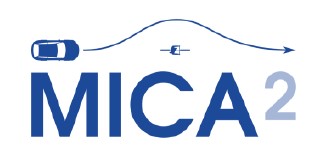New project in SAFER’s portfolio: Modelling Interaction between Cyclists an Automobiles (MICA2)
Today, vulnerable road users, and cyclists in particular, pay the highest injury toll in road crashes across Sweden as well as in many other developed countries. Motorized vehicles are frequently involved in crashes resulting in severe cyclist injuries and are thus an important part of its solution. Overtaking manoeuvres, where motorized vehicles circumvent cyclists at high speed, are particularly dangerous and one way to reduce the number of accidents is to increase and optimize use of active safety systems such as collision warning, automated emergency braking or steering.
New driver models will be developed
The aim of MICA2 is to address the safety of the whole overtaking manoeuvre by developing and testing novel active and passive safety systems. Insurance claims databases and crash databases will be analysed to determine the causes and mechanisms behind the crashes at each overtaking phase, so that driver models and systems development can be prioritized accordingly. Automated emergency braking will be combined with automated emergency steering, and new driver models (predicting driver controls during all the overtaking phases) will inform these systems’ activation. New passive safety systems will be developed and tested. A prospective overall safety benefit evaluation will use counterfactual simulations to assess the combined benefit of active and passive safety systems. New methodologies for experimental data collection, including virtual and augmented reality, will be developed and used to design and validate driver models in critical situations (such as head-on collisions) that cannot be tested on test tracks because of ethical and technical constraints. Naturalistic data, site-based and from instrumented vehicles, will support the development and evaluation of the systems.
Insights into test-scenario design
The new safety systems and methodologies developed in this project will help the Swedish industry maintain and strengthen its worldwide competitive advantage in active and passive safety. Further, the results from MICA2 will inform Euro NCAP testing by providing insights into test-scenario design and acceptability for warnings and interventions, especially for automated emergency steering. Because the driver models developed in MICA2 will predict driver behaviour in critical situations, there is a potential for these models to be integrated into the development of automated vehicles. Finally, this project will inform the design of cooperative applications by specifying which information should be shared by the motorized (automated) vehicle, cyclist, and oncoming traffic during an overtaking manoeuvre in order to preserve the safety of all road users.
The project includes researchers from Volvo Cars and Toyota Motor Europe, Veoneer and Autoliv, the insurance company If, the small enterprise Viscando and the research institute VTI. The academic partner, Chalmers, will lead the project. The duration of the project is three years, 2020Q1-2022Q4, with a total budget of 23.2 MSEK, of which 11.6 MSEK are applied for from Vinnova FFI. Three PhD students will be completely or partially funded by the project. The project will be placed in SAFER’s research area Systems for accident prevention and automated driving.


